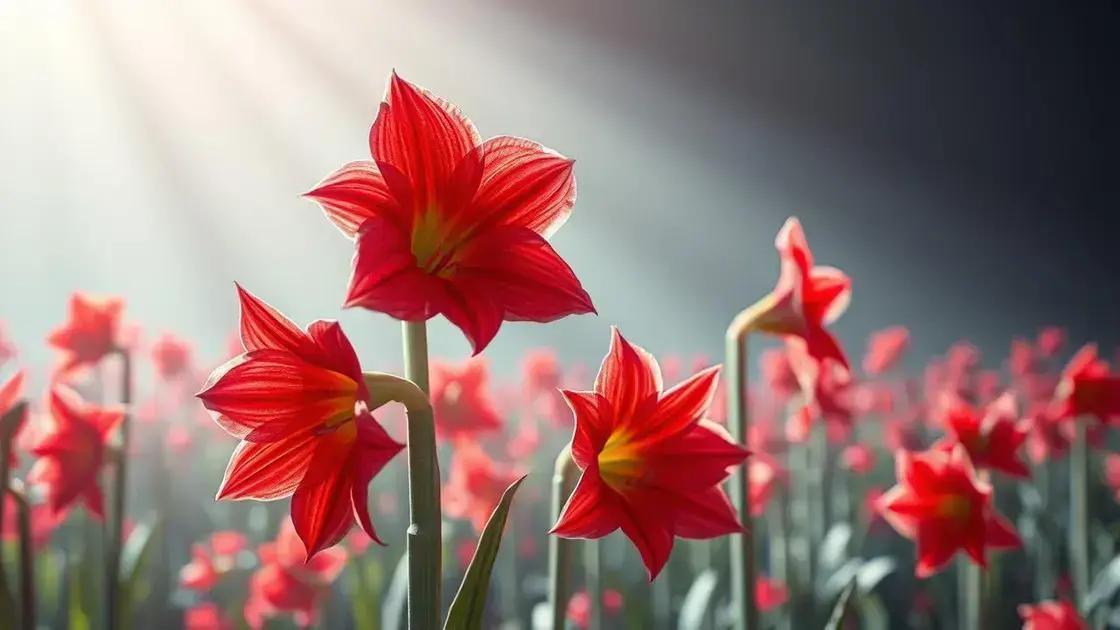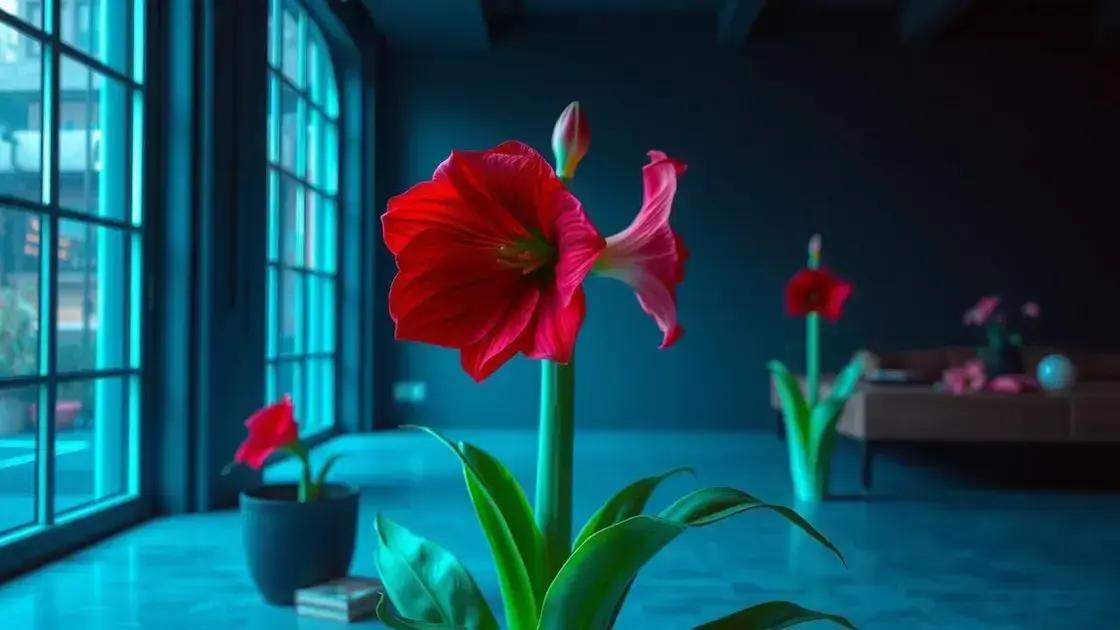How to Care for Amaryllis Plant Indoors: 5 Essential Tips for Beginners
How to care for amaryllis plant indoors is a question many new indoor gardeners ask as they seek vibrant blooms. The joy of nurturing these stunning flowers can be immensely rewarding. Growing amaryllis bulbs indoors allows you to enjoy their incredible beauty throughout the year, transforming your living space with each blooming cycle. Let’s explore some practical tips and tricks to help your amaryllis thrive.
Table of Contents
ToggleWatering techniques for amaryllis plants
Watering techniques for amaryllis plants are crucial for ensuring your indoor flowers thrive. Proper watering practices contribute significantly to the overall health of your amaryllis. Here’s how to effectively manage watering to promote beautiful blooms.
- Water only when the soil is dry to the touch.
- Use room-temperature water to avoid shocking the roots.
- Ensure drainage by using pots with holes at the bottom.
- Monitor humidity levels in your home; dry air can require more frequent watering.
- Avoid overwatering, which can lead to bulb rot.
Understanding the needs of amaryllis
To ensure optimal growth, it’s important to recognize when to water amaryllis. Factors like temperature, humidity, and the size of your pot can affect your watering routine. Typically, during active growth, your amaryllis may require more water, whereas during dormancy, less frequent watering is necessary.
Best practices for watering amaryllis
- Check the soil moisture by inserting your finger about an inch into the soil.
- If the soil feels dry, it’s time to water.
- Water until it drains out of the bottom, ensuring the bulb receives sufficient moisture.
- Discard any excess water that collects in the saucer to prevent root rot.
For further insights, exploring indoor gardening techniques can provide valuable resources.
Common watering mistakes to avoid
| Mistake | Description |
|---|---|
| Overwatering | Too much water can cause the bulb to rot and lead to fungal growth. |
| Underwatering | Neglecting to water can lead to dehydration, impacting flower development. |
| Using cold water | Cold water can shock the plant, causing stress and poor growth. |
Incorporating the right watering techniques is essential for growing a healthy amaryllis indoors. By understanding the specific needs of these plants, you’ll be able to enjoy stunning blooms year after year.
Understanding light requirements for amaryllis

Understanding light requirements for amaryllis is essential for their healthy growth and stunning blooms. These beautiful plants thrive when provided with the right amount of light, making it crucial for indoor gardening success.
Light preferences of amaryllis plants
Amaryllis plants prefer bright, indirect sunlight. Here are some key points regarding their light needs:
- Direct sunlight can scorch the leaves, so avoid placing them in harsh afternoon sun.
- Bright but filtered light is ideal to promote flowering.
- Rotate your amaryllis pot every few weeks to ensure even light exposure on all sides.
Optimal light conditions
- Place your amaryllis near a window where it can receive morning sunlight.
- Use sheer curtains to diffuse harsh light during the day.
- In winter, ensure the plant receives at least six hours of light per day to support growth.
If you find your amaryllis is stretching towards the light, it may indicate insufficient light. Consider repositioning them for better exposure.
Identifying light problems
| Problem | Symptoms |
|---|---|
| Too much direct sunlight | Scorched leaves and faded flowers. |
| Too little light | Stretched stems and lack of blooms. |
| Inconsistent lighting | Weak growth and uneven flowering. |
For additional insights, exploring indoor gardening techniques can help you find the best methods to enhance your plant care.
By ensuring your amaryllis receives the right light conditions, you’ll be rewarded with vibrant flowers and healthy foliage.
Fertilizing tips to boost amaryllis growth
Fertilizing tips to boost amaryllis growth are essential for ensuring these stunning plants reach their full potential. Proper fertilization provides essential nutrients, leading to vibrant blooms and robust growth.
Choosing the right fertilizer
When selecting a fertilizer for your amaryllis, consider the following:
- Opt for a balanced, water-soluble fertilizer (e.g., 10-10-10) for overall health.
- Use fertilizers with higher phosphorus content to promote blooming.
- Avoid high nitrogen formulas, as they may lead to excessive leaf growth at the expense of flowers.
Fertilizing schedule for amaryllis
- Start fertilizing about 2-3 weeks after potting your bulbs to encourage growth.
- Fertilize every 4-6 weeks during the growing season (spring and summer).
- Reduce or stop fertilizing during dormancy (fall and winter) to allow the plant to rest.
Additional feeding can be applied during the blooming phase to enhance flower production, ensuring your amaryllis remains stunning.
Common fertilization mistakes
| Mistake | Description |
|---|---|
| Over-fertilizing | Can lead to salt buildup in the soil, harming the plant. |
| Using the wrong type of fertilizer | May not provide the right nutrients, impacting growth and blooms. |
| Neglecting to fertilize | Can result in weak growth and fewer flowers. |
To learn more about successful techniques for your indoor garden, exploring indoor gardening techniques can be very beneficial.
By following these fertilizing tips, you can significantly boost your amaryllis growth and create a stunning display in your home.
In conclusion
Caring for your amaryllis involves understanding and applying key techniques like proper watering, light conditions, and fertilization. By focusing on these essential tips, you can nurture your plants to produce stunning blooms that brighten your indoor space. Remember to adjust your care routine based on the specific needs of your amaryllis as they grow and change through their life cycle. For more great ideas, check out these tips on enhancing your indoor garden to create a flourishing environment for all your plants.

